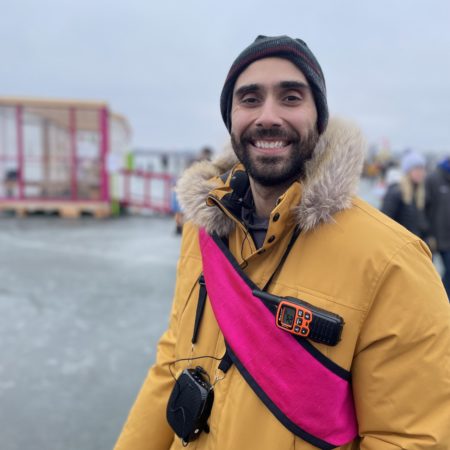
about Us
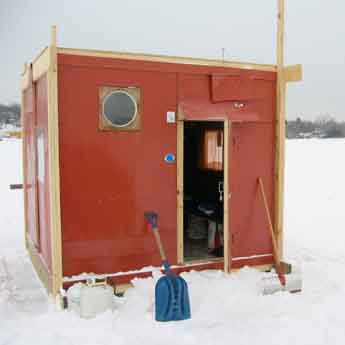
Since 2004 Art Shanty Projects has created whimsical, weird and joyful winter art experiences for grown adults and kids of all ages. Inspired by pop-up ice fishing villages, artists use the frozen lake as a public platform to create a temporary, interactive community. With few regulations and no building codes – and against intense and unpredictable winter weather conditions – artists have the freedom and challenge to create wild and wonderful work that can’t be experienced anywhere else. Together, with our visitors, we celebrate, champion, and embrace the extreme winter sport of art making. And, to answer everyone’s #1 question: Nope! We do not fish in our shanties. You’d need a license for that!
Through a juried application process and intentional outreach, ~40 artist groups (~200 artists total) are given stipends and logistical support to use the frozen lake as a public platform to create and present interactive shanty installations and a rotating schedule of performances. The public program spans four weekends, attracting over 27,000 annual visitors of all ages to explore participatory art and connect with one another in winter, an often isolating season. Visitors can ride art bicycles, boogie on a light-up dancefloor, film a movie scene ‘on location’, learn to play native lacrosse, or feel Taiko drums reverberating underneath their feet.
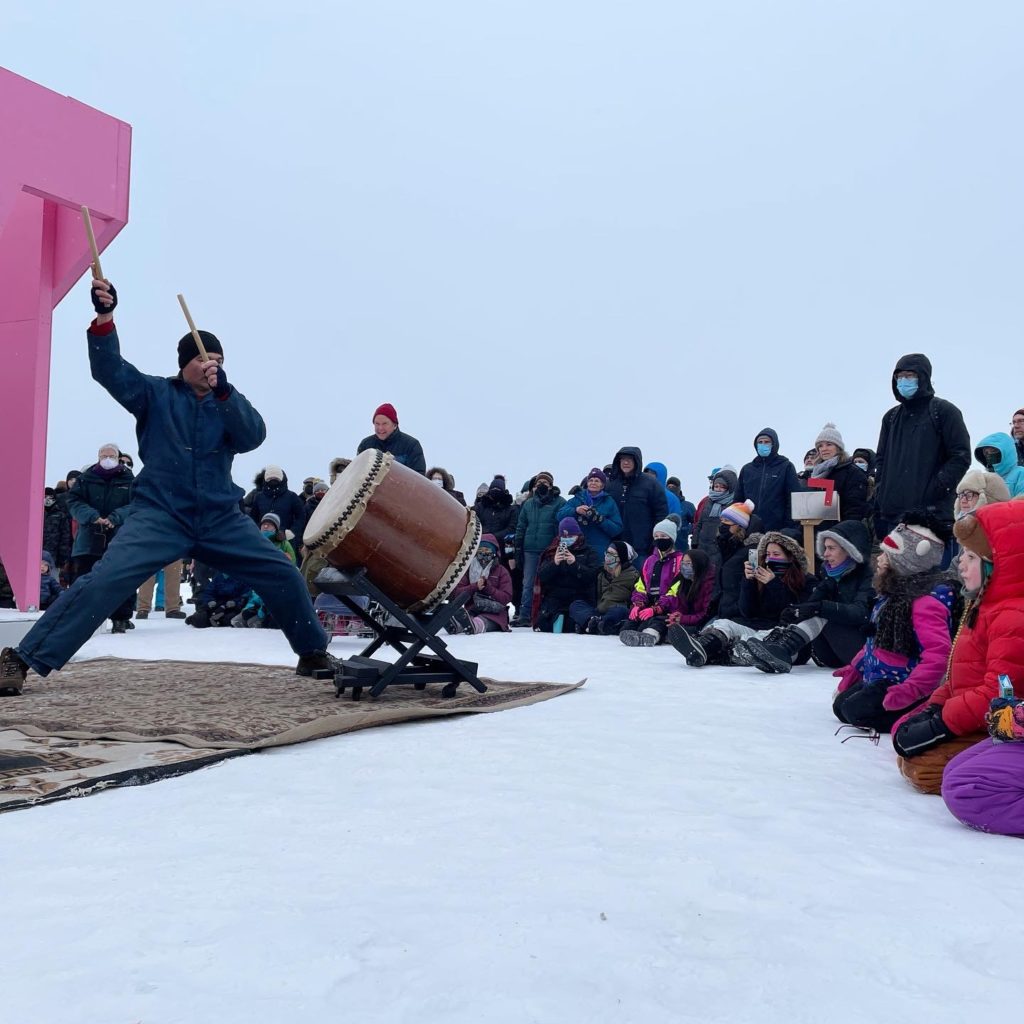
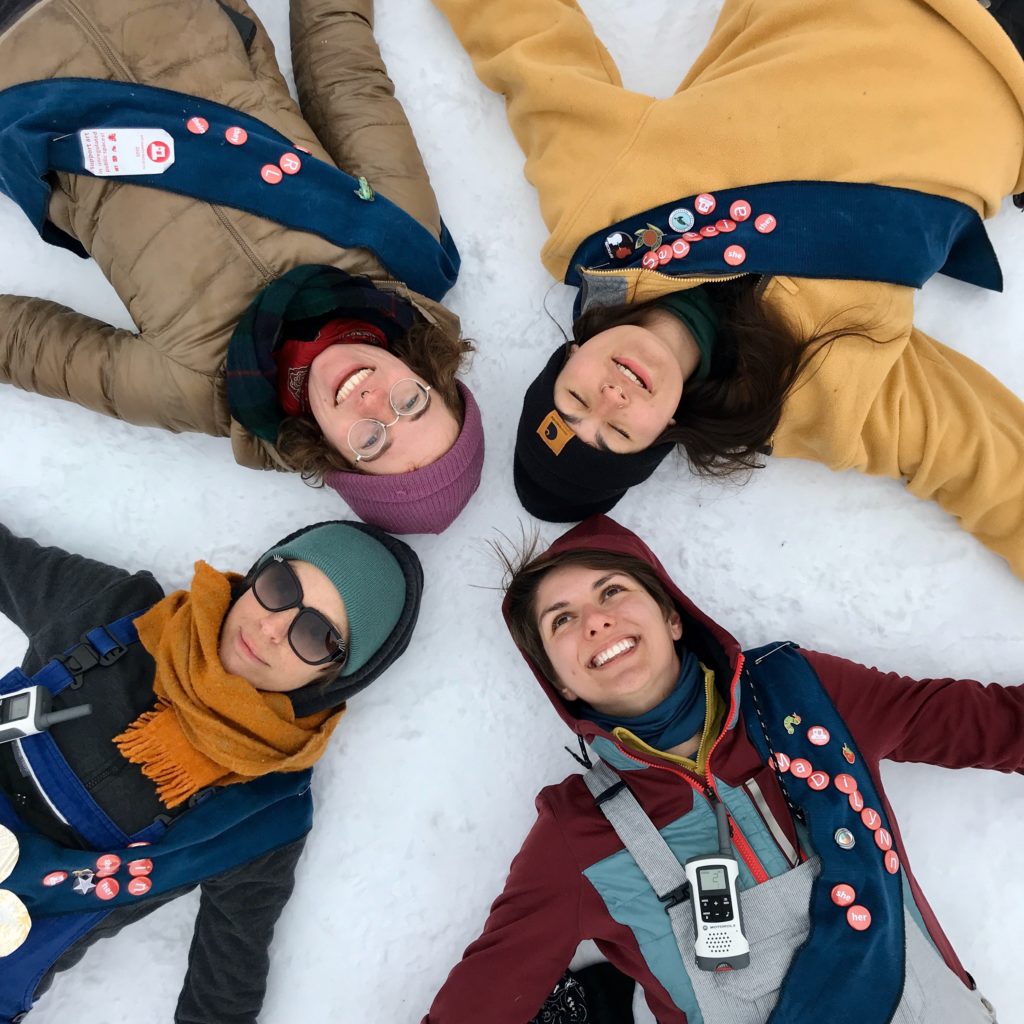
Four of our seven staff members from 2020. Photo: ASP staff
Led by a team of femme/trans/women/nonbinary (FTWNB) & LGBTQIA2S+ people, Art Shanty Projects uses art to create immersive, social experiences in a landscape usually occupied by cis white men – a frozen lake – inviting everyone from frozen lake first-timers to seasoned adventurers to find their connection to creativity, one another, and the outdoors.
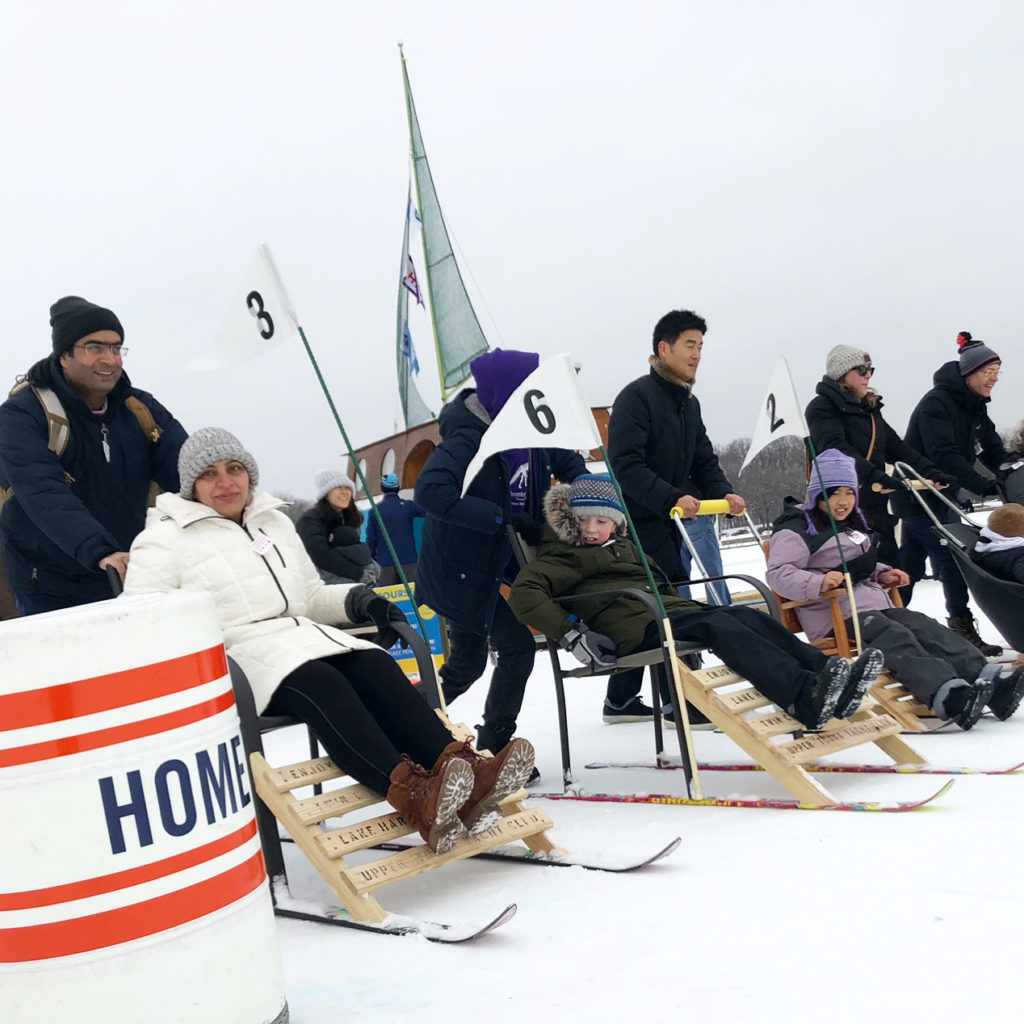
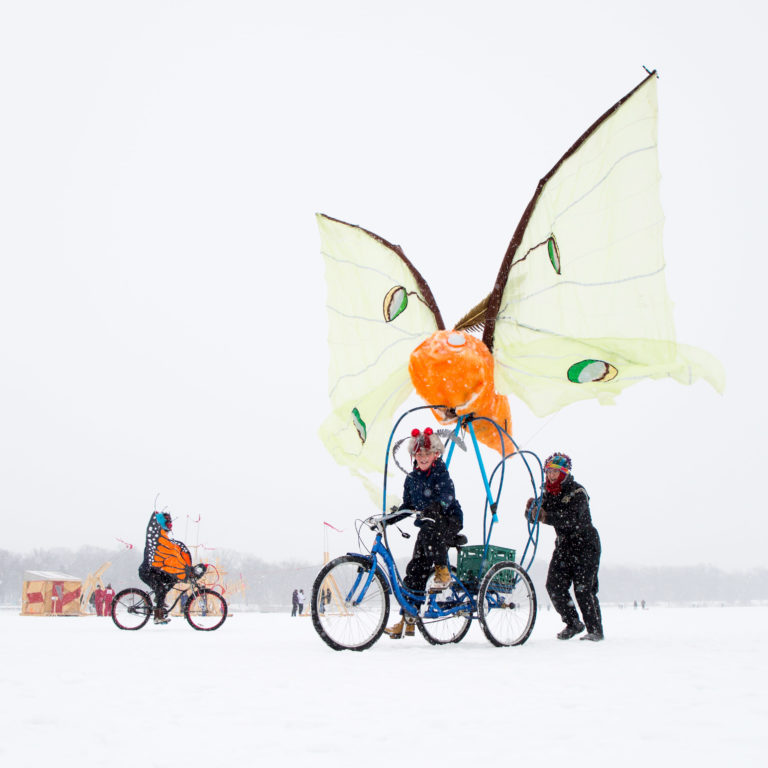
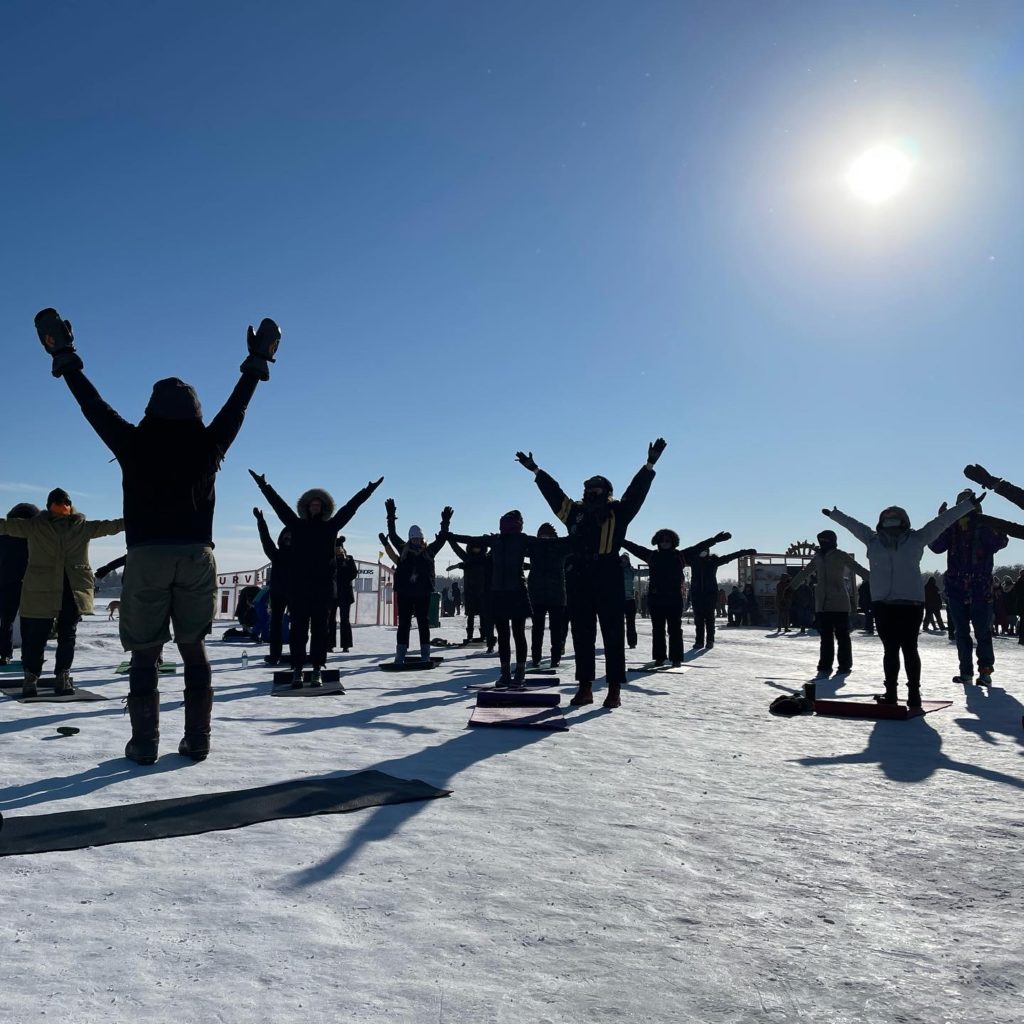
Kicksled races, art bikes and frozen yoga. Photo credits: Ryan Stopera, Shine On Photos, ASP staff
Mission
Art Shanty Projects intentionally creates an impermanent art village on Minnesota lake ice amid changing climate and environment. With a spirit of embracing challenges through creativity, we support an ecosystem that inspires everyone to create and participate in art, thrive in winter, and build community.
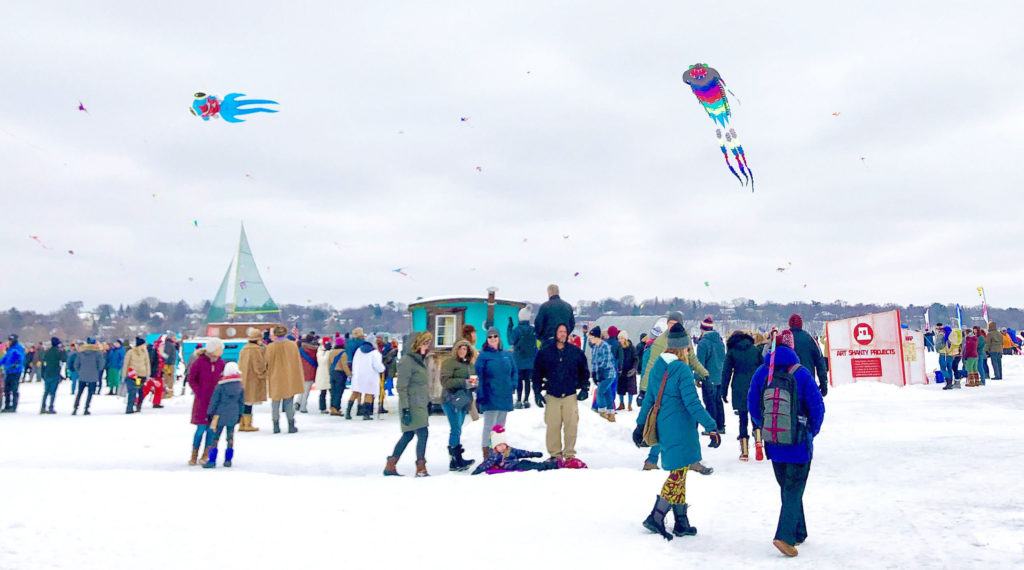

Scenes from the shanty village in Jan/Feb 2020. Photos: ASP staff , Ryan Stopera
Vision
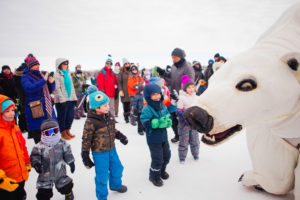
Our vision for the future is to spark new ideas, encourage the discovery and development of existing artistic skills, and break down the barriers between artist and participant through unexpected encounters with a vibrant artistic village.
We reinterpret traditions that sustain communities through winter to forge new pathways of connectedness using art to shape a world where people and planet are respected, healthy, and thriving. We strive for a community without hierarchy. Instead, we work to share power and resources.
We celebrate the skills and unique talents each individual brings to the project and aspire to compensate people fairly for their labor. Artists create the shanties, performances, and art actions of their imaginations, not limited by access to resources.
We build accessibility into the fabric of how we do art and we work to remove all barriers of access for participants. We demonstrate a deep commitment to social, racial, gender, and economic justice through our actions, processes, and program.
We actively work toward zero waste, sustainable gatherings. Material resources are consciously chosen and sourced, reused, repurposed, and recycled. Our people power continues to be useful throughout the year. Our vision for the future is fueled by joy and creative celebration.
Guiding Principles
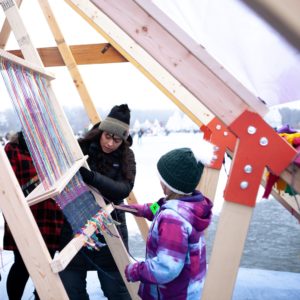
- Nurture participatory art-making experiences and provide a platform to create art while breaking down the distinction between artist and participant.
- Challenge status quo systems through our processes with a specific desire to recognize the redistribution of wealth and resources as critical to our community’s success.
- Move in the world with the values of connection and interconnectedness, and with a goal of strengthening our interdependence within our communities.
- Create more possibilities by sharing resources and centering an attitude of abundance in our communications, actions, and ideals.
- Be a beacon that draws individuals and groups together through our work, shares its resources and light outward, and fosters community partnerships and relationships.
- Manifest environmental stewardship as an expanded understanding of our place within the ecosystem and as a caring and nurturing voice for the environment.
- Weave accessibility into our work as an invitation for creativity, and build accessibility into the fabric of how we do art and what we expect of our community, inclusive of ourselves.
- Demonstrate a deep commitment to social, racial, gender, and economic justice, and actively work to identify and remove the barriers and challenges that historically marginalized groups face in accessing community art, gatherings, and winter activities
- Welcome diverse lived experiences not traditionally found within ASP to our decision-making tables and make room for more racial, ethnic, gender, sexual, and cultural diversity and ambiguity, with an ultimate goal to decenter the historic whiteness found in the organization and communities at large.
- Sustain and contribute to a culture of vigilant review and revision in our language, plans, policies, procedures, and goals.

